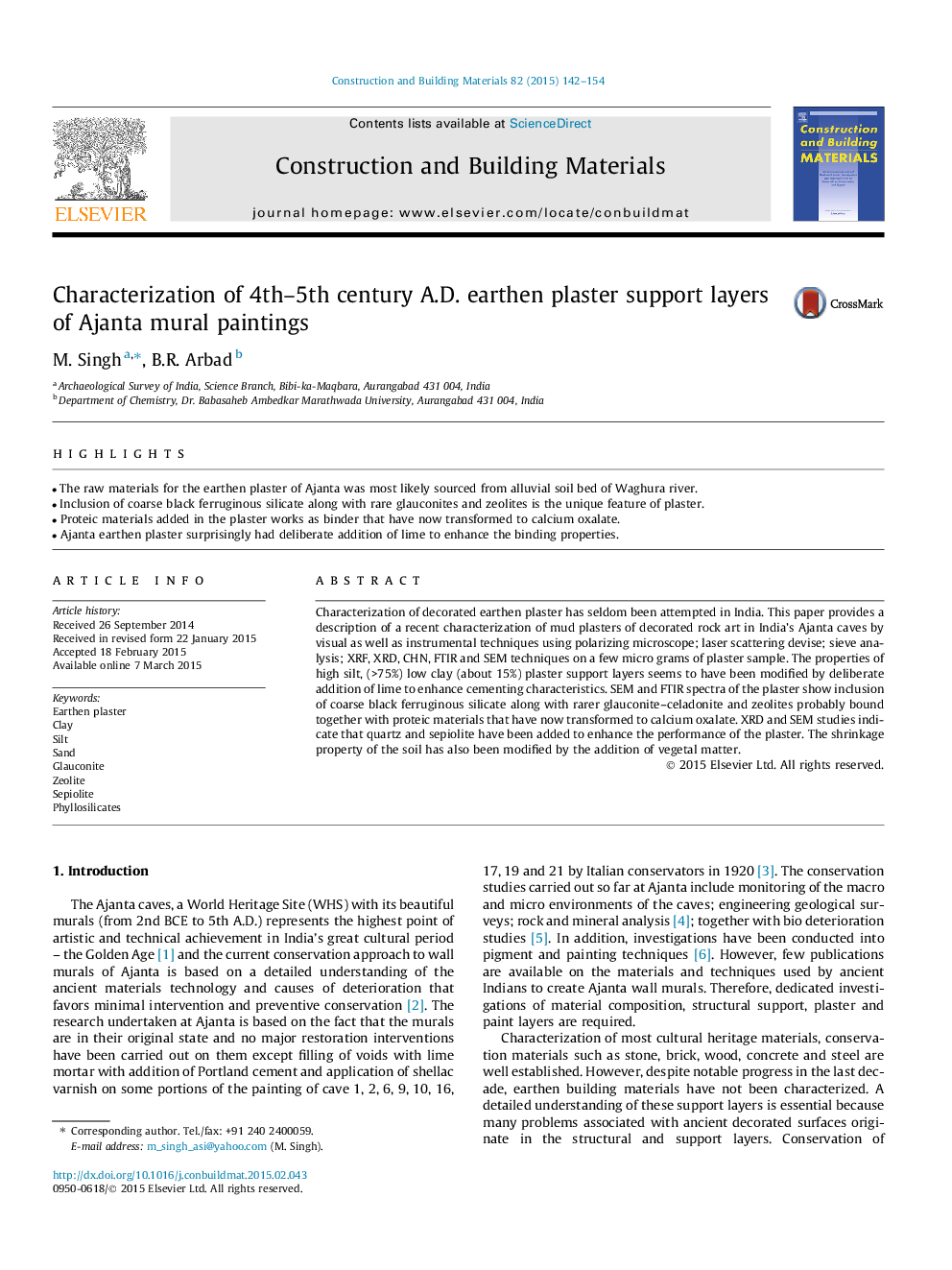| کد مقاله | کد نشریه | سال انتشار | مقاله انگلیسی | نسخه تمام متن |
|---|---|---|---|---|
| 256922 | 503567 | 2015 | 13 صفحه PDF | دانلود رایگان |
• The raw materials for the earthen plaster of Ajanta was most likely sourced from alluvial soil bed of Waghura river.
• Inclusion of coarse black ferruginous silicate along with rare glauconites and zeolites is the unique feature of plaster.
• Proteic materials added in the plaster works as binder that have now transformed to calcium oxalate.
• Ajanta earthen plaster surprisingly had deliberate addition of lime to enhance the binding properties.
Characterization of decorated earthen plaster has seldom been attempted in India. This paper provides a description of a recent characterization of mud plasters of decorated rock art in India’s Ajanta caves by visual as well as instrumental techniques using polarizing microscope; laser scattering devise; sieve analysis; XRF, XRD, CHN, FTIR and SEM techniques on a few micro grams of plaster sample. The properties of high silt, (>75%) low clay (about 15%) plaster support layers seems to have been modified by deliberate addition of lime to enhance cementing characteristics. SEM and FTIR spectra of the plaster show inclusion of coarse black ferruginous silicate along with rarer glauconite–celadonite and zeolites probably bound together with proteic materials that have now transformed to calcium oxalate. XRD and SEM studies indicate that quartz and sepiolite have been added to enhance the performance of the plaster. The shrinkage property of the soil has also been modified by the addition of vegetal matter.
Journal: Construction and Building Materials - Volume 82, 1 May 2015, Pages 142–154
